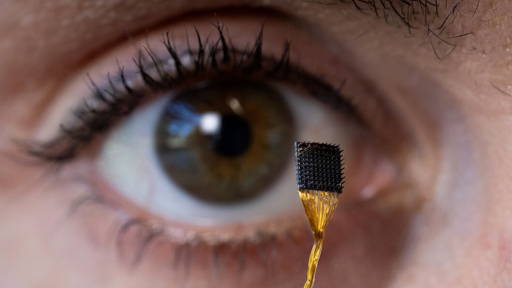In low- and middle-income countries, manual cataract surgery with a small incision (Small Incision Cataract Surgery, SICS) is a common and cost-effective procedure to combat blindness due to cataracts. Despite the great clinical importance of this technique, until recently there was a lack of publicly available datasets of surgical video recordings - a shortcoming that severely hampered the development of AI solutions in this context. An international research team, led by experts including the University of Bonn, has now changed this.
In the recently published study, in Scientific Reports, the researchers present the “SICS-105” dataset: a first set of publicly available surgical videos of 105 SICS surgeries performed at Sankara Eye Hospitals in India. The dataset was used to train an AI model that recognizes surgical phases with high accuracy. This deep learning model, “MS-TCN++,” is able to classify different steps in surgery - from the initial approach to the eye to lens removal - with more than 85% precision.
Importance of AI for surgical quality control
“The recognition of surgical stages is essential for improving the quality of surgery and training new surgeons,” said Dr. Kaushik Murali, chairman of the medical administration of the Sankara Eye Foundation India. By using AI to objectively analyze surgical operations, it becomes possible to compare surgeons' performance among themselves, identify deviations from standard protocols and provide feedback on critical steps in the process.
The AI application thus not only provides support to experienced surgeons, but is especially valuable for training purposes in regions where supervision and learning resources are limited. "We see this as an important step toward a future in which the quality of surgical care can be uniformly measured and improved worldwide," states Dr. Maximilian Wintergerst, principal investigator of the study.
International AI competition accelerates innovation
To support further innovation, the team has launched the “SICS-155 Challenge,” a global AI competition taking place during the MICCAI 2025 conference in South Korea. The challenge invites international research groups to test their AI algorithms on a comprehensive dataset of 155 annotated surgical videos divided into 18 different surgical phases.
The annotations were performed manually by ophthalmologists at Sankara Eye Foundation and made available through a tool developed by Microsoft Research India. Participants submit not only a working algorithm, but also an accompanying paper explaining their technical approach.
According to Prof. Dr. Thomas Schultz, affiliated with the University of Bonn and the Lamarr Institute, the competition provides a unique opportunity to test AI solutions in a context where the need for innovative support is high. “By doing so, we hope not only to stimulate technological advances, but also to make the clinical impact of AI on global healthcare tangible,” Schultz said.
Future applications
The research team's ambition extends beyond phase recognition. In collaboration with Microsoft Research India, AI models are also currently being developed for automatic detection of surgical instruments and potential complications during surgery. This next step may lead to even more advanced forms of quality assurance and clinical decision-making, based entirely on video analysis.
This transdisciplinary collaboration - bringing together informatics, ophthalmology and international health care - will lay a solid foundation for an inclusive, data-driven future of surgical care. Moreover, the open accessibility of the dataset means that institutions worldwide will have the opportunity to contribute to and benefit from these advances. Using AI and open science, manual cataract surgery will not only become safer and more efficient, but also more accessible to surgeons in training and to millions of patients who depend on this procedure.
Innovations for cataract surgery
Two years ago, Ommelander Hospital began performing cataract surgery with the SurgiCube, an innovative technology that blows sterile air directly onto the surgical field. This approach eliminates the need for a completely sterile operating room, freeing up regular operating rooms for other procedures. Thanks to the SurgiCube, ophthalmology teams can operate 13 to 18 patients per day three days a week in a compact, sterile area of about 1.5 square meters. An efficient operation that improves throughput and optimizes the use of hospital capacity.
And in 2020, the Rotterdam Eye Hospital was the first hospital in the Benelux to test the ZEISS Quatera 700 phaco machine during cataract surgery. This innovative machine is equipped with the Quattro pump, which ensures a constant eye pressure and stable anterior chamber of the eye, reducing the use of phaco energy and putting less strain on the cornea. In addition, Automated Ultrasound technology allows energy to be used only when the phaco needle is in contact with lens material, reducing the risk of complications.









